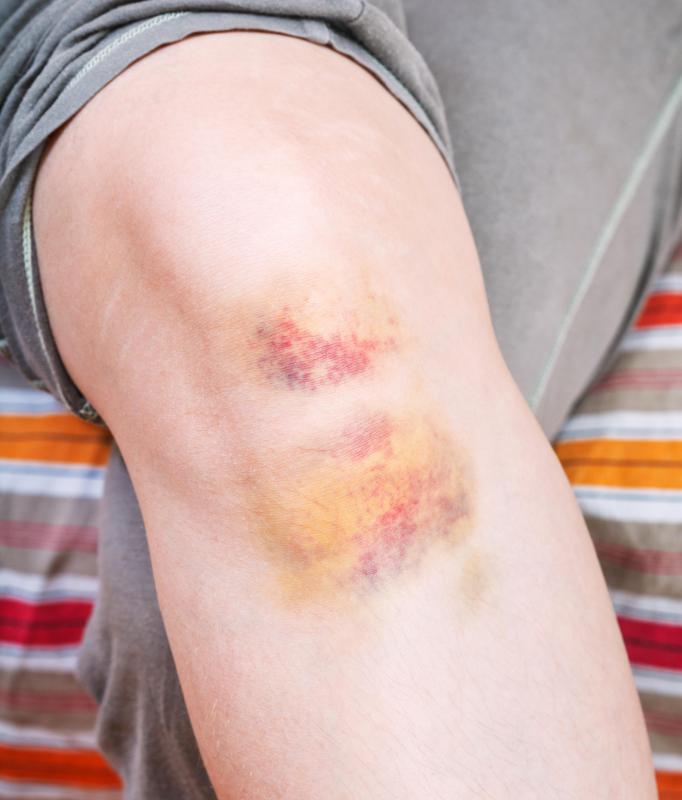At WiseGEEK, we're committed to delivering accurate, trustworthy information. Our expert-authored content is rigorously fact-checked and sourced from credible authorities. Discover how we uphold the highest standards in providing you with reliable knowledge.
What Is Macular Amyloidosis?
Macular amyloidosis is a skin, or cutaneous, condition that is characterized by flat discolored patches of skin called macules. It falls under the category of disorders called amyloidosis, which involves the deposition of amyloid proteins in organs or tissues in the body. This kind of build-up usually causes damage to the affected areas by preventing normal function.
The macules that characterize the condition are pruritic, meaning they produce a severe itching sensation. Brown or grey are the usual pigmentation manifestations, with the usual site of occurrence being the upper back. In some instances, the eruptions appear on the arms.

Macular amyloidosis is one of the three conditions under the primary cutaneous amyloidosis category, as well as the most common. The other two are lichen amyloidosis, which is characterized by pruritic lichenoid solid skin elevations; and nodular amyloidosis, named for its small rounded lumps. Each condition is associated with the receptor protein known as oncostatin-M specific receptor subunit beta, or oncostatin-M receptor. Some medical researchers believe that mutations of this substance may lead to the appearance of such diseases.

Although the exact cause is still unknown, the medical community has proposed two major possibilities. The first hypothesis is called the fibrillar body theory, which suggests that two groups of cells—fibroblasts, which function as connective tissue cells; and macrophages, white blood cells that eat substances that pose an infection risk—turn prematurely dead cells in the epidermis, or outer layer of the skin, to amyloids. The other explanation, the secretory theory, suggests that it is the basal cells, which are found in the innermost epidermal layer, that form the amyloid when they disintegrate.
Macular amyloidosis is a condition that only affects adults. Studies have shown that the disease is more prevalent in women than in men. Also, it tends to occur more frequently among South Americans, Asians and Middle Easterners.
There are different kinds of treatment methods for macular amyloidosis. Antihistamines, or histamine antagonists, such as chlorpheniramine and diphenhydramine are used to inhibit the organic compound histamine, thus reducing allergies; and agents such as dimethyl sulfoxide are applied for reduction of inflammation. Other treatment methods include ultraviolet B (UV-B) light application and surgical excision of the macules. A totally effective or successful cure for macular amyloidosis, however, is yet to be devised or discovered, and the disease remains long-lasting and extremely difficult to eradicate.
AS FEATURED ON:
AS FEATURED ON:












Discuss this Article
Post your comments